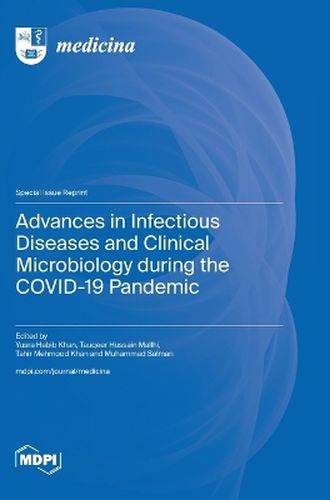Readings Newsletter
Become a Readings Member to make your shopping experience even easier.
Sign in or sign up for free!
You’re not far away from qualifying for FREE standard shipping within Australia
You’ve qualified for FREE standard shipping within Australia
The cart is loading…






This title is printed to order. This book may have been self-published. If so, we cannot guarantee the quality of the content. In the main most books will have gone through the editing process however some may not. We therefore suggest that you be aware of this before ordering this book. If in doubt check either the author or publisher’s details as we are unable to accept any returns unless they are faulty. Please contact us if you have any questions.
The COVID-19 pandemic caused a change in the pattern of various infectious diseases. Evidence suggests that the same nonpharmaceutical interventions employed to prevent the transmission of SARS-CoV-2 likely led to the reduced incidence of influenza in various regions across the globe. However, the COVID-19 pandemic caused disruptions in the reporting of other infectious diseases such as sexually transmitted diseases and other coronavirus infections. Decreased reporting of notifiable infectious diseases and conditions during the pandemic remained a major concern for health authorities. Ascertaining the impact of the COVID-19 pandemic on the transmission patterns of other infectious diseases holds significant implications for public health, but this topic has not yet been studied to a greater extent. On the other hand, the scope and relevance of clinical microbiology are appreciated more than ever. Viral structure, transmission, diagnosis, and optimal sterilization and disinfection process were the key elements that clinical microbiologists shared for the betterment of the community throughout the pandemic. This issue underscores various aspects of the advancements in infectious diseases and clinical microbiology during the ongoing COVID-19 pandemic. This Special Issue highlights the need for integrated efforts to control any future outbreak along with parallel management of other infectious diseases.
$9.00 standard shipping within Australia
FREE standard shipping within Australia for orders over $100.00
Express & International shipping calculated at checkout
This title is printed to order. This book may have been self-published. If so, we cannot guarantee the quality of the content. In the main most books will have gone through the editing process however some may not. We therefore suggest that you be aware of this before ordering this book. If in doubt check either the author or publisher’s details as we are unable to accept any returns unless they are faulty. Please contact us if you have any questions.
The COVID-19 pandemic caused a change in the pattern of various infectious diseases. Evidence suggests that the same nonpharmaceutical interventions employed to prevent the transmission of SARS-CoV-2 likely led to the reduced incidence of influenza in various regions across the globe. However, the COVID-19 pandemic caused disruptions in the reporting of other infectious diseases such as sexually transmitted diseases and other coronavirus infections. Decreased reporting of notifiable infectious diseases and conditions during the pandemic remained a major concern for health authorities. Ascertaining the impact of the COVID-19 pandemic on the transmission patterns of other infectious diseases holds significant implications for public health, but this topic has not yet been studied to a greater extent. On the other hand, the scope and relevance of clinical microbiology are appreciated more than ever. Viral structure, transmission, diagnosis, and optimal sterilization and disinfection process were the key elements that clinical microbiologists shared for the betterment of the community throughout the pandemic. This issue underscores various aspects of the advancements in infectious diseases and clinical microbiology during the ongoing COVID-19 pandemic. This Special Issue highlights the need for integrated efforts to control any future outbreak along with parallel management of other infectious diseases.